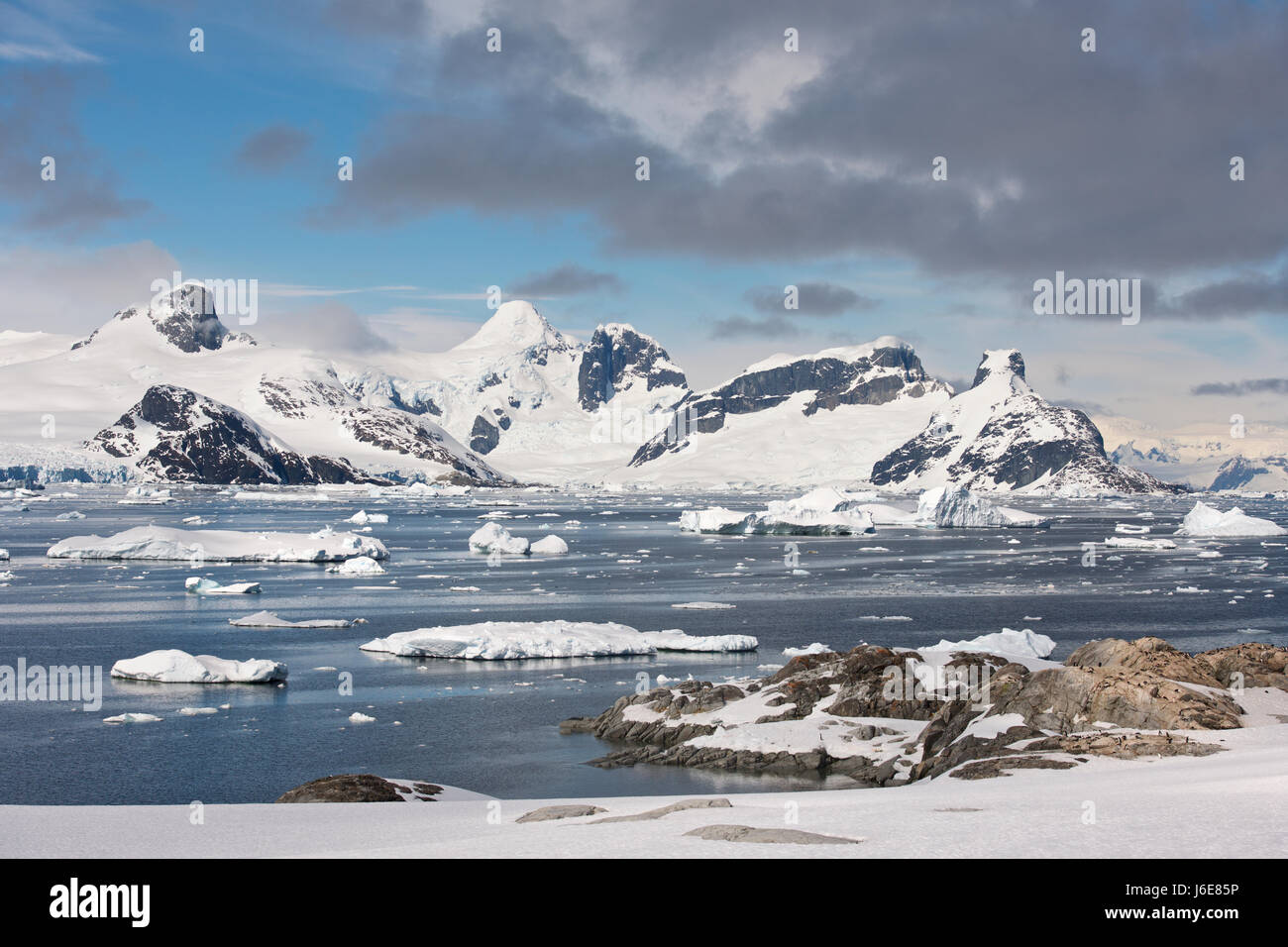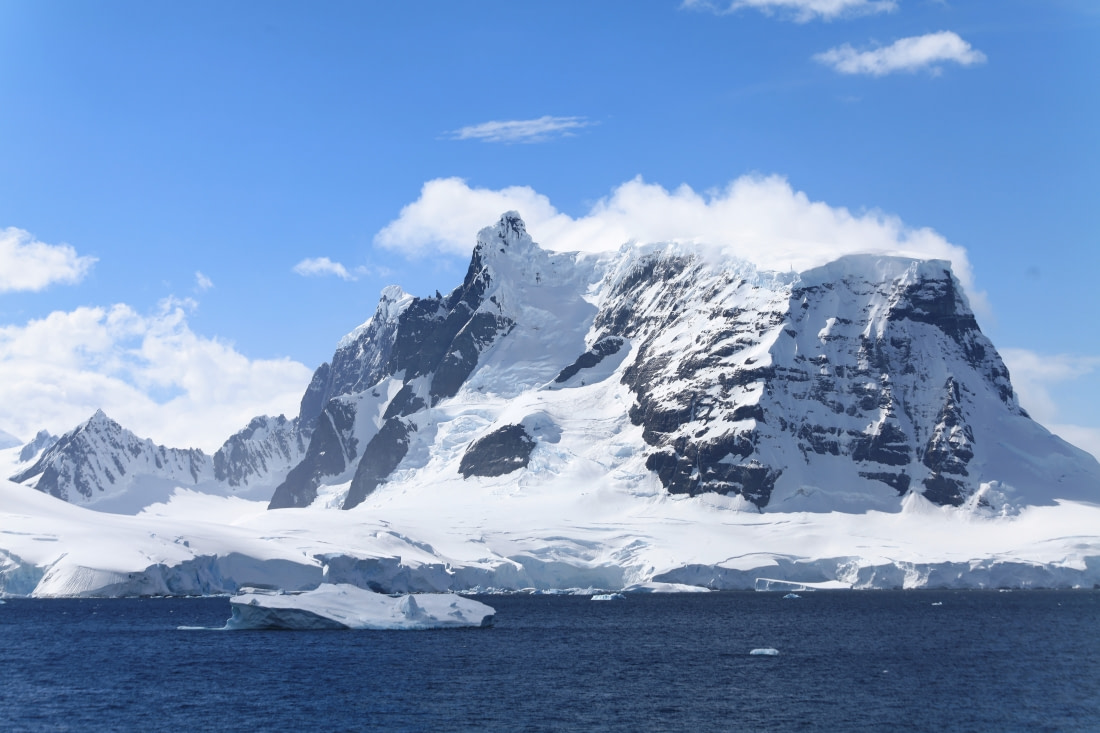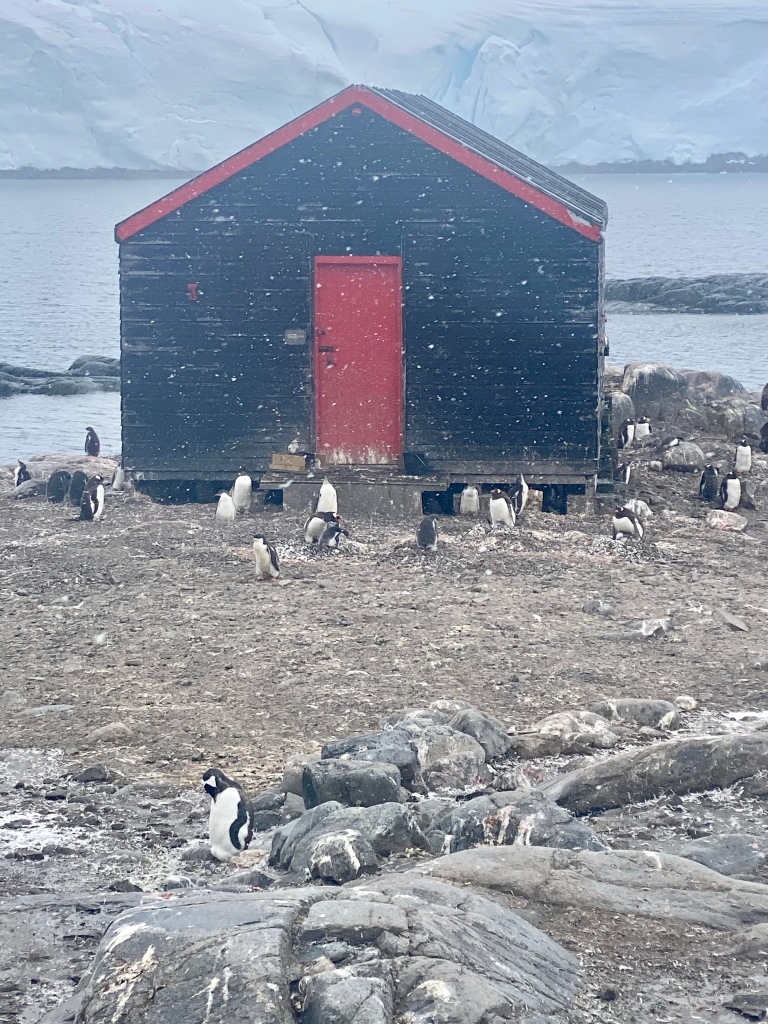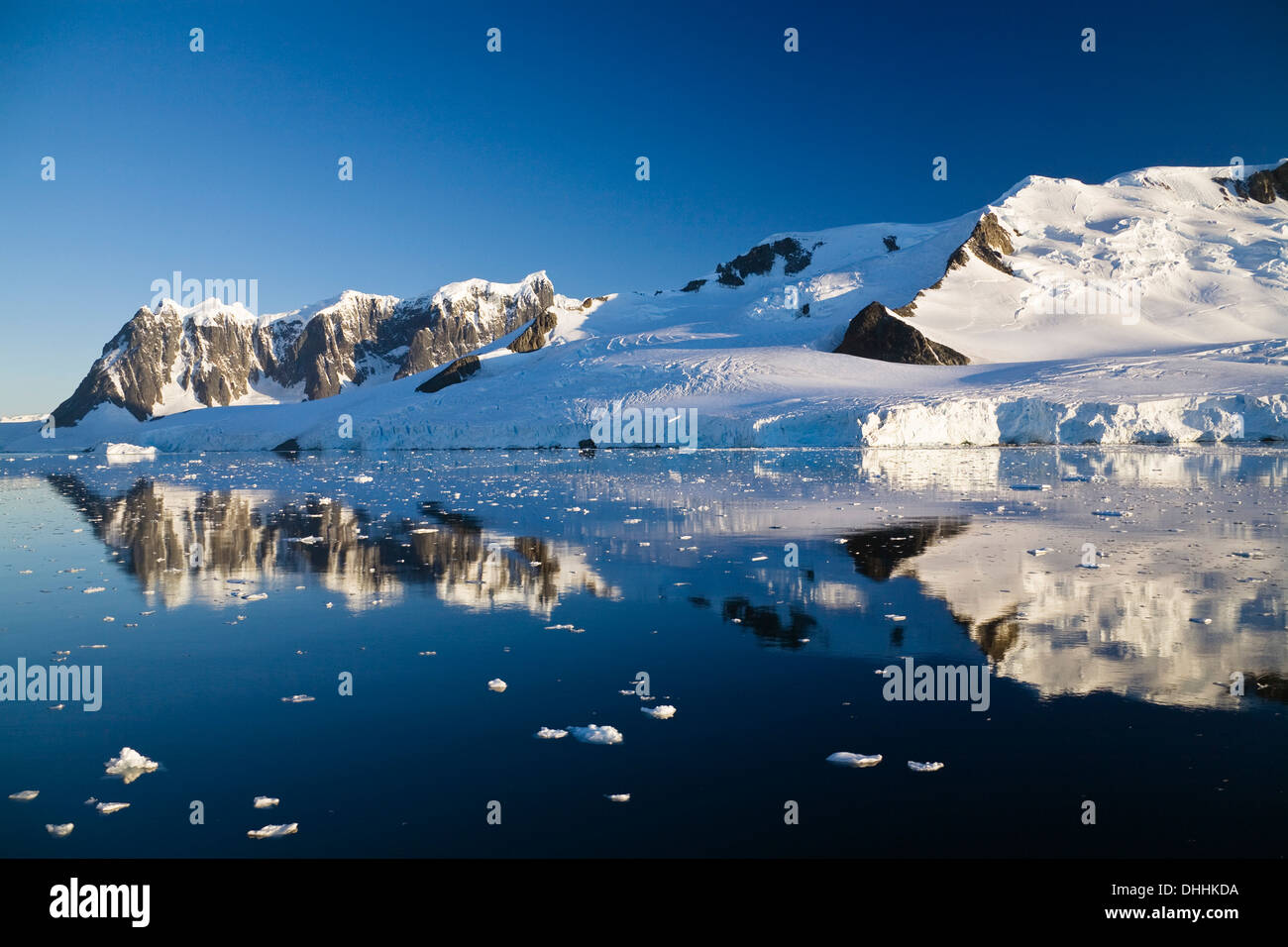Wiencke Island: Secrets of Antarctica's Pristine Paradise

Wiencke Island is a breathtaking destination located in the Antarctic Peninsula. This island is surrounded by stunning glaciers, majestic mountains, and pristine waters. Whether you are an adventurer seeking thrilling experiences or a nature lover looking for tranquillity, Wiencke Island offers something for everyone.
Ancient history and significance of Wiencke Island
Wiencke Island has a rich archaeological history, with evidence of human presence dating back thousands of years. The ancient indigenous people used this island as a hunting ground and a place for spiritual rituals. Today, remnants of their settlements and tools can still be found, giving us a glimpse into the island's ancient past.
The significance of Wiencke Island extends beyond its archaeological value. It played a crucial role in the whaling industry during the 19th century. Many whaling stations were established on the island, where large numbers of whales were processed for their valuable oil. Today, you can explore the remnants of these stations and learn about the island's whaling history.
Unique features and attractions of Wiencke Island
Wiencke Island is known for its breathtaking landscapes and unique natural attractions. Here are some of the highlights:
-
Paradise Bay: This bay lives up to its name, with its pristine waters, towering glaciers, and stunning icebergs floating in the sea. Visitors can take boat tours or even kayak among the icebergs for an unforgettable experience.
-
Port Lockroy: This former British research station now serves as a museum and post office for tourists. You can send postcards from the southernmost post office in the world and learn about the scientific research conducted in Antarctica.
-
Whale watching: Wiencke Island is an excellent spot for whale watching, with frequent sightings of humpback whales and orcas. Witnessing these magnificent creatures in their natural habitat is a truly awe-inspiring experience.
-
Adventurous activities: For thrill-seekers, Wiencke Island offers opportunities for activities such as hiking, mountaineering, and even camping on the ice. The island's rugged terrains and breathtaking views provide the perfect backdrop for unforgettable adventures.
Wiencke Island is a hidden gem in Antarctica, offering a unique blend of history, natural beauty, and adventurous activities. Whether you are exploring its ancient archaeological sites, admiring its breathtaking landscapes, or seeking thrilling experiences, this island will leave you in awe. So pack your bags and embark on an unforgettable journey to Wiencke Island.

Location and Geography
Geographical location and coordinates of Wiencke Island
Wiencke Island is situated in the Antarctic Peninsula region, one of the most remote and pristine areas on Earth. Its geographical coordinates are approximately 64°50' S latitude and 63°30' W longitude. This island is located within the Palmer Archipelago, surrounded by other scenic islands and fjords.
Physical characteristics and landscape of Wiencke Island
Wiencke Island is a truly remarkable destination, characterized by its stunning landscapes and unique physical features. Here are some of the key attributes that make this island so captivating:
-
Glaciers and ice formations: The island is surrounded by magnificent glaciers, some of which are more than 100 meters thick. These sparkling ice formations create a surreal environment and contribute to the island's unparalleled beauty.
-
Majestic mountains: Wiencke Island is home to towering mountains that offer breathtaking views from their peaks. The jagged peaks and ridgelines provide dramatic backdrops to the island's landscapes.
-
Pristine waters: The crystal-clear waters surrounding Wiencke Island are a sight to behold. With their vibrant hues of blue and green, these waters are a haven for various marine life and add to the island's allure.
-
Unique flora and fauna: Despite the harsh conditions, Wiencke Island supports a surprising diversity of plant and animal life. Mosses, lichens, and hardy grasses can be found in sheltered areas, while seabirds, penguins, seals, and whales thrive in the surrounding waters.
-
Icebergs: One of the most captivating sights on Wiencke Island is the presence of icebergs. These frozen works of art, sculpted by nature, can be found in various shapes and sizes, floating serenely in the surrounding sea.
-
Biodiversity: Wiencke Island is part of the Antarctic Specially Protected Area, designated for its unique biodiversity. The island's ecosystems are carefully preserved to ensure the conservation of its fragile and precious environment.
The combination of these physical features creates an otherworldly and mesmerizing landscape that draws visitors to Wiencke Island. Exploring this awe-inspiring destination is truly an experience of a lifetime.

Flora and Fauna
Rich biodiversity and unique plant species on Wiencke Island
Wiencke Island is not just a haven for stunning landscapes and icy wonders but also a nurturing ground for a surprising variety of plant life. Despite the harsh conditions, this island supports a unique array of flora that adds to its natural beauty. Here are some of the plant species that can be found on Wiencke Island:
-
Mosses: In the sheltered areas of the island, lush green mosses blanket the ground, providing a soft contrast to the rugged surroundings. These hardy plants are well-adapted to survive in the extreme cold and are a testament to the resilience of life in Antarctica.
-
Lichens: Adorning rocks and surfaces on Wiencke Island, lichens come in various shapes and colours, adding a touch of vibrancy to the stark landscape. These symbiotic organisms consist of fungi and algae living in harmony, creating a unique ecosystem.
-
Hardy grasses: Some areas on the island offer shelter from the fierce winds and freezing temperatures, providing an opportunity for hardy grasses to grow. These grasses provide nourishment to the diverse wildlife that calls Wiencke Island home.
Marine life and bird species found in the surrounding waters
The pristine waters surrounding Wiencke Island are teeming with life and provide abundant resources for various marine creatures. Visitors to this island may be lucky enough to encounter some of the fascinating wildlife that inhabits these waters. Here are a few notable species:
-
Seabirds: The skies above Wiencke Island are filled with the graceful flights of seabirds. Albatrosses, petrels, and cormorants are just a few examples of the bird species that make their nests on the cliffs and rocks of the island. Their calls echo through the air, adding a symphony of sounds to the natural orchestra of the island.
-
Penguins: These charismatic creatures are a delight to observe. Wiencke Island is home to several species of penguins, including Gentoo, Chinstrap, and Adélie. Witnessing their playful antics and waddling walks is sure to bring a smile to your face.
-
Seals: The waters around Wiencke Island are an important habitat for seals. Weddell seals, crabeater seals, and Antarctic fur seals can be spotted lounging on ice floes or diving into the ocean in search of food. The sight of these majestic creatures in their natural habitat is awe-inspiring.
Exploring the rich biodiversity of Wiencke Island, both on land and in the surrounding waters, offers a unique opportunity to witness the wonders of nature and appreciate the delicate balance of life in Antarctica.

Historical Significance
Exploration and research history of Wiencke Island
Wiencke Island holds a rich historical significance, as it has been the site of various expeditions and scientific research throughout the years. Explorers and scientists have ventured to this remote island to unravel the mysteries of Antarctica and contribute to our understanding of this fascinating continent. Some notable highlights of Wiencke Island's exploration and research history include:
-
Early Explorations: In the early 20th century, brave explorers such as Roald Amundsen and Ernest Shackleton set foot on Wiencke Island during their Antarctic expeditions. They braved treacherous weather conditions and uncharted territories to push the boundaries of human exploration.
-
Scientific Studies: Wiencke Island has also been a hub for scientific research. Numerous expeditions have conducted studies on various aspects of Antarctic ecosystems to better comprehend the unique adaptations of plant and animal life. These studies have helped scientists gain valuable insights into climate change and the impact of human activities on fragile ecosystems.
Significant historical events and expeditions on the island
Throughout history, Wiencke Island has witnessed several significant events and expeditions that have left a lasting impact on our understanding of Antarctica. Some notable historical events include:
-
The First Wintering Party: In 1947, the British Falkland Islands Dependencies Survey established a wintering party on Wiencke Island, marking the first extended stay on the island during the Antarctic winter. This paved the way for future scientific research and winter expeditions.
-
The Bransfield House: The Bransfield House, located on Wiencke Island, served as a base for multiple expeditions, including British, Argentine, and Chilean expeditions. The house has now been restored and transformed into a museum, providing visitors with a glimpse into the history of exploration in the region.
-
International Collaborations: Over the years, Wiencke Island has become a site for international collaborations in the field of climate research and conservation. Scientists from different countries come together to share knowledge, conduct joint studies, and work towards protecting this fragile ecosystem.
The historical significance of Wiencke Island highlights its importance as a site of exploration, research, and international cooperation. It serves as a reminder of the human spirit of discovery and the ongoing efforts to safeguard Antarctica's unique environment.

Research Stations
Overview of research stations on Wiencke Island
Wiencke Island is home to several research stations, which serve as crucial hubs for scientific exploration and study in Antarctica. These stations provide the necessary infrastructure and support for scientists and researchers to conduct experiments and gather data. Some of the prominent research stations on Wiencke Island include:
-
Arctowski Research Station: Operated by the Polish Academy of Sciences, the Arctowski Research Station has been in operation since 1977. It is named after Henryk Arctowski, a Belgian scientist and explorer who made significant contributions to polar research. The station focuses on biological, geological, and meteorological studies, as well as monitoring climate change.
-
Carlini Base: Formerly known as Jubany, Carlini Base is an Argentine research station situated on Potter Cove, Wiencke Island. It has been operational since 1953 and conducts various scientific studies, including glaciology, marine biology, and atmospheric research.
-
Frei Montalva Base: This Chilean research station, named after former Chilean president Eduardo Frei Montalva, was established in 1969. It primarily focuses on marine biology, with a special emphasis on studying penguins, seals, and other marine fauna.
These research stations play a vital role in facilitating collaborative research efforts, providing researchers from different countries with the opportunity to work together and share knowledge. They also contribute to our understanding of the impact of climate change on Antarctica's unique ecosystems.
Scientific studies and ongoing research projects
The research stations on Wiencke Island support a wide range of scientific studies and ongoing research projects. Some of the areas of study include:
-
Climate change: Researchers at the stations collect data on temperature, ice accumulation, and other climate-related variables to study the effects of global warming on Antarctica. This data is crucial for predicting the future impacts of climate change on the region.
-
Marine biology: The island's stations are particularly active in studying the rich marine biodiversity of the surrounding waters. Scientists investigate the behaviour of marine mammals, study the impacts of changing ice dynamics on marine ecosystems, and monitor the health of various species.
-
Glaciology: Wiencke Island's glaciers are a subject of great interest for researchers. They study ice dynamics, measure ice thickness, and monitor glacier retreats to gain insights into the overall health and stability of these important features.
Ongoing research projects aim to deepen our understanding of Wiencke Island's ecosystems and contribute to global scientific knowledge. By studying the island's unique environment, scientists can also make valuable contributions to conservation efforts to protect this fragile ecosystem.
The research stations on Wiencke Island play a significant role in advancing scientific knowledge and understanding of Antarctica. Through collaboration and ongoing research projects, scientists are working towards unravelling the mysteries of this remote continent and ensuring the preservation of its pristine environment.

Conservation Efforts
Environmental Conservation Initiatives on Wiencke Island
Wiencke Island and its surrounding waters are home to a diverse array of wildlife and unique ecosystems that require protection. The research stations on the island are actively involved in various environmental conservation initiatives to preserve the delicate balance of this pristine environment.
- The research stations collaborate closely with international organizations and governments to develop and implement sustainable practices. These practices include minimizing waste production, promoting recycling, and reducing carbon emissions.
- The stations conduct regular environmental impact assessments to ensure that their research activities have a minimal negative impact on the local flora and fauna.
- They also work towards minimizing disturbances to the wildlife, particularly during sensitive breeding seasons, by enforcing strict guidelines for visitors and researchers.
Protection of wildlife and preservation of the ecosystem
The protection of wildlife and the preservation of the ecosystem are top priorities for the research stations on Wiencke Island. They are committed to safeguarding the diverse range of species that call this island home.
- To protect marine ecosystems, the research stations collaborate with marine biologists to monitor the health and behaviour of species such as penguins, seals, and other marine fauna. They track population trends and study the impacts of changing ice dynamics on these animals.
- The stations also contribute to efforts to combat illegal fishing in the region, ensuring that the delicate balance of the marine ecosystem is not disrupted.
- Furthermore, the research stations actively participate in initiatives to raise awareness about the importance of conserving Antarctica's unique ecosystems, both locally and globally.
Through their conservation efforts, the research stations on Wiencke Island are making significant contributions to the preservation of Antarctica's environment. By promoting sustainable practices and protecting wildlife, they are ensuring that future generations can continue to study and appreciate this remote and fragile continent.
Overall, the research stations on Wiencke Island are not only hubs for scientific exploration and study but also important players in the conservation and preservation of the island's delicate ecosystems. Through their ongoing efforts and collaborations, they are working towards a sustainable future for Antarctica and the planet as a whole.

Popular Activities
Adventure tourism and recreational activities on Wiencke Island
If you are looking for a thrilling adventure in a breathtaking setting, Wiencke Island is the perfect destination for you. This remote island offers a wide range of recreational activities that cater to all adventure enthusiasts.
- Exciting guided tours are available for visitors who want to explore the island and learn about its unique wildlife and ecosystems. Knowledgeable guides will take you on unforgettable journeys through stunning landscapes and introduce you to the diverse flora and fauna.
- Thrill-seekers can engage in exhilarating activities such as snowshoeing, ice climbing, and even camping on the snow-covered terrain. These activities provide an opportunity to experience the extreme beauty of the Antarctic continent.
- For those who prefer a slower pace and a closer encounter with nature, scenic boat cruises are available to explore the surrounding waters. You can witness majestic icebergs, spot wildlife, and immerse yourself in the serenity of this pristine environment.
Opportunities for hiking, kayaking, and wildlife spotting
Wiencke Island offers fantastic opportunities for hiking, kayaking, and wildlife spotting, allowing you to connect with nature on a more personal level.
- Hiking trails winding through the island's stunning landscapes offer awe-inspiring views of glaciers and snow-covered mountains. With every step, you'll discover the beauty and tranquillity of this remote wilderness.
- Kayaking adventures provide a unique perspective of the island's coastline, allowing you to explore hidden coves and encounter curious seals and penguins. Glide through crystal-clear waters surrounded by breathtaking scenery.
- Wildlife spotting is a must-do activity on Wiencke Island. Observe playful penguins, adorable seals, and graceful whales as they go about their daily routines. These encounters will create memories that last a lifetime.
Whether you are seeking exhilarating adventures or peaceful moments in nature, Wiencke Island offers a range of activities that will suit your preferences. Immerse yourself in the wonders of this pristine environment and create unforgettable experiences that will stay with you forever.

Climate and Weather
Climatic conditions and weather patterns on Wiencke Island
When it comes to the climate and weather on Wiencke Island, it is essential to be prepared for the unique conditions of the Antarctic region. The island experiences a polar climate characterized by freezing temperatures and strong winds.
During the summer months, which last from November to March, temperatures can range from -2°C to 8°C (28°F to 46°F). However, visitors should be aware that even in the summer, the weather can be highly unpredictable, with rapid changes in temperature and weather conditions.
In winter, from April to October, temperatures drop significantly, averaging between -15°C and -20°C (5°F to -4°F). The island is covered in snow and ice during this time, creating a stunning white landscape.
Seasonal variations and the impact of climate change
Like many other parts of the Antarctic region, Wiencke Island has been experiencing the effects of climate change. The area has seen a decrease in sea ice coverage and an increase in average temperatures over the past few decades.
These changes in the climate have had significant impacts on the wildlife and ecosystems of the island. Some species of penguins and seals have had to adapt to new food sources and changing nesting patterns. Glaciers and ice shelves have also been affected, with melting and calving occurring more frequently.
It is crucial for visitors to understand the fragility and vulnerability of this pristine environment and to be respectful of the natural surroundings. Sustainable tourism practices, such as minimizing waste and disturbance to wildlife, can help protect this unique ecosystem for future generations.
When planning your visit to Wiencke Island, it is essential to be prepared for the climatic conditions and to pack accordingly. Layered clothing, windproof jackets, and sturdy footwear are recommended to stay warm and comfortable in the challenging Antarctic weather.
